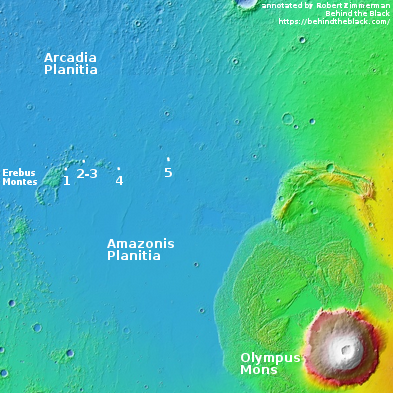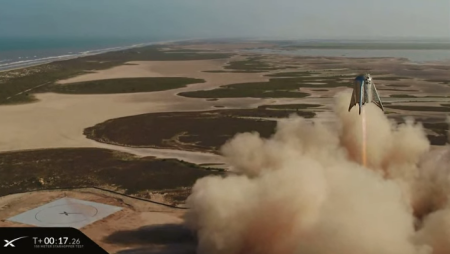SpaceX wins launch contract for seven SES satellites
Capitalism in space: SES yesterday announced that it has awarded SpaceX’s Falcon 9 the launch contract for the next seven satellites in its next generation communications constellation.
This is a big win for SpaceX, made even more clear by a briefing held yesterday with reporters by Arianespace CEO Stéphane Israel. In that briefing Israel outlined that company’s upcoming launch contracts, where he also claimed that this launch manifest is so full he had to turn down SES’s launch offer.
Because of its full manifest, Arianespace was unable to offer SES launch capacity in 2021 for its next generation of medium Earth orbit satellites, mPOWER. SES announced plans Sept. 9 to fly mPOWER satellites on SpaceX Falcon 9 rockets from Florida’s Cape Canaveral. Arianespace launched the 20 satellites in the SES O3B constellation.
It was important to SES to launch in 2021, Israel said. Given Arianespace’s full manifest, it was difficult “to offer the guarantee they were asking for,” he added.
If you believe that I have a bridge I want to sell you. Arianespace has been struggling to get launch contracts for its new Ariane 6 rocket. They have begun production on the first fourteen, but according Israel’s press briefing yesterday, Ariane 6 presently only has eight missions on its manifest. That means that six of the rockets they are building have no launch customers. I am sure they wanted to put those SES satellites on at least some of those rockets, and couldn’t strike a deal because the expendable Ariane 6 simply costs more than the reusable Falcon 9.
Capitalism in space: SES yesterday announced that it has awarded SpaceX’s Falcon 9 the launch contract for the next seven satellites in its next generation communications constellation.
This is a big win for SpaceX, made even more clear by a briefing held yesterday with reporters by Arianespace CEO Stéphane Israel. In that briefing Israel outlined that company’s upcoming launch contracts, where he also claimed that this launch manifest is so full he had to turn down SES’s launch offer.
Because of its full manifest, Arianespace was unable to offer SES launch capacity in 2021 for its next generation of medium Earth orbit satellites, mPOWER. SES announced plans Sept. 9 to fly mPOWER satellites on SpaceX Falcon 9 rockets from Florida’s Cape Canaveral. Arianespace launched the 20 satellites in the SES O3B constellation.
It was important to SES to launch in 2021, Israel said. Given Arianespace’s full manifest, it was difficult “to offer the guarantee they were asking for,” he added.
If you believe that I have a bridge I want to sell you. Arianespace has been struggling to get launch contracts for its new Ariane 6 rocket. They have begun production on the first fourteen, but according Israel’s press briefing yesterday, Ariane 6 presently only has eight missions on its manifest. That means that six of the rockets they are building have no launch customers. I am sure they wanted to put those SES satellites on at least some of those rockets, and couldn’t strike a deal because the expendable Ariane 6 simply costs more than the reusable Falcon 9.







